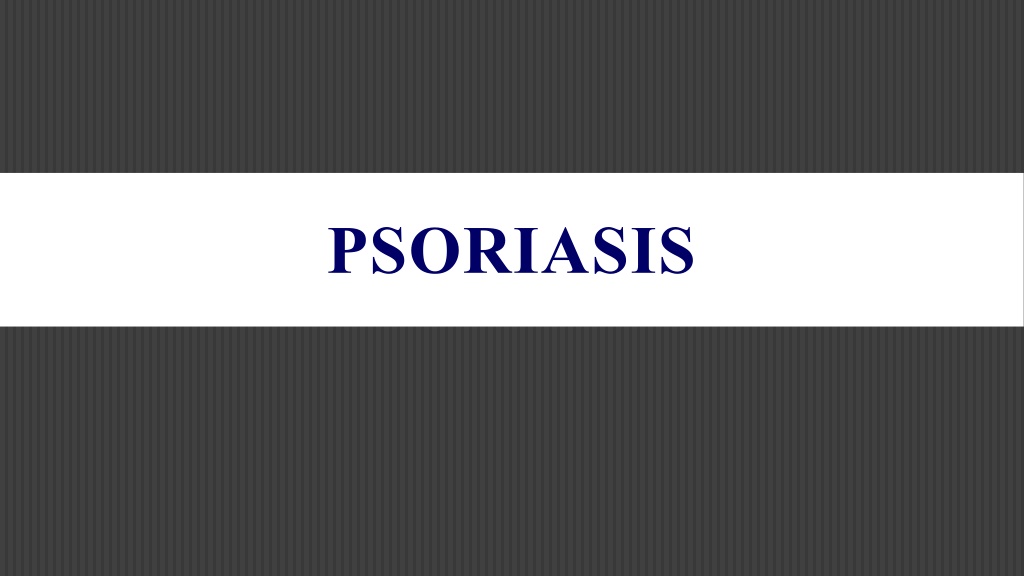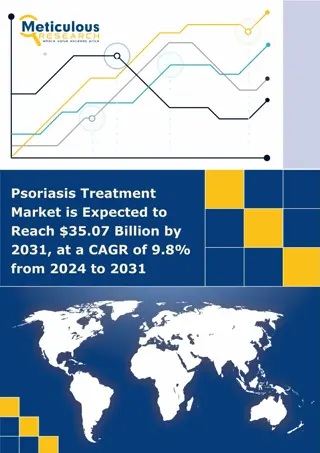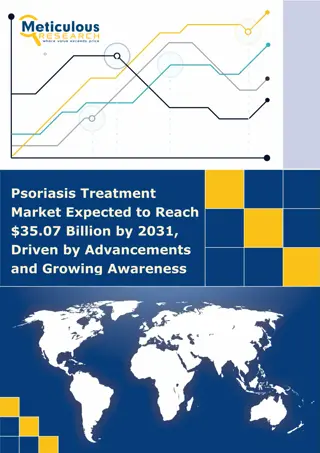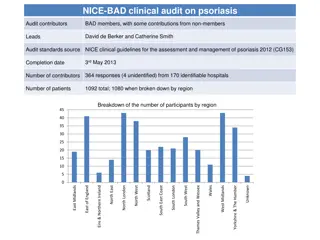Understanding Psoriasis: Causes, Types, and Symptoms
Psoriasis is a chronic, multifactorial skin condition characterized by papulosquamous eruptions caused by abnormalities in arachidonic acid metabolism and skin cell immunity. It is believed to have a genetic component and results in various types of lesions like chronic plaque, guttate, flexural, and palmoplantar psoriasis. Additionally, nail abnormalities such as pitting, dystrophy, onycholysis, and subungual keratosis are common in psoriasis patients.
Download Presentation

Please find below an Image/Link to download the presentation.
The content on the website is provided AS IS for your information and personal use only. It may not be sold, licensed, or shared on other websites without obtaining consent from the author. Download presentation by click this link. If you encounter any issues during the download, it is possible that the publisher has removed the file from their server.
E N D
Presentation Transcript
PSORIASIS grouped Papulosquamous eruptionIdiopathic, chronicIt is caused by thickening of the epidermis layer.
PSORIASIS Approximately 30% of patients have a family history of the same disease. believed to be inherited as Multifactorial inheritance
PSORIASIS Abnormalities in arachidonic acid metabolism and abnormal cell immunity of the skin Epidermis cells multiply abnormally Dividing cells from the basal layer
PSORIASIS It takes 3-4 days to reach the epidermis (usually 4 weeks). Cells lack normal cohesion, causing keratin to easily peel off. Cell granular layer disappears. inserted into the Keratin layer
PSORIASIS There are many types of lesions.1. Chronic plaque type psoriasis is a thick, red, flaky patch or white scale attached to it, rising, collapsing, found in the area of friction. including head and nails
PSORIASIS There are many types of lesions.2. Guttatepsoriasis is a small nodule that occurs all over the body, often following streptococci infection in the throat.
PSORIASIS There are many types of lesions.3. Flexural psoriasis is found in soft areas with red patches and found in folds. Must be separated from fungi.
PSORIASIS There are many types of lesions.4. Palmoplantarpsoriasis Dry, thick, scaly rash difficult to distinguish from Chronix eczeme.
PSORIASIS The nail is pitted (nail pitting), the nail is rough (Nail dystrophy), the nail is hard from the skin. (Onycholysis) thickening of the skin under the nail (subunpual keratosis).























